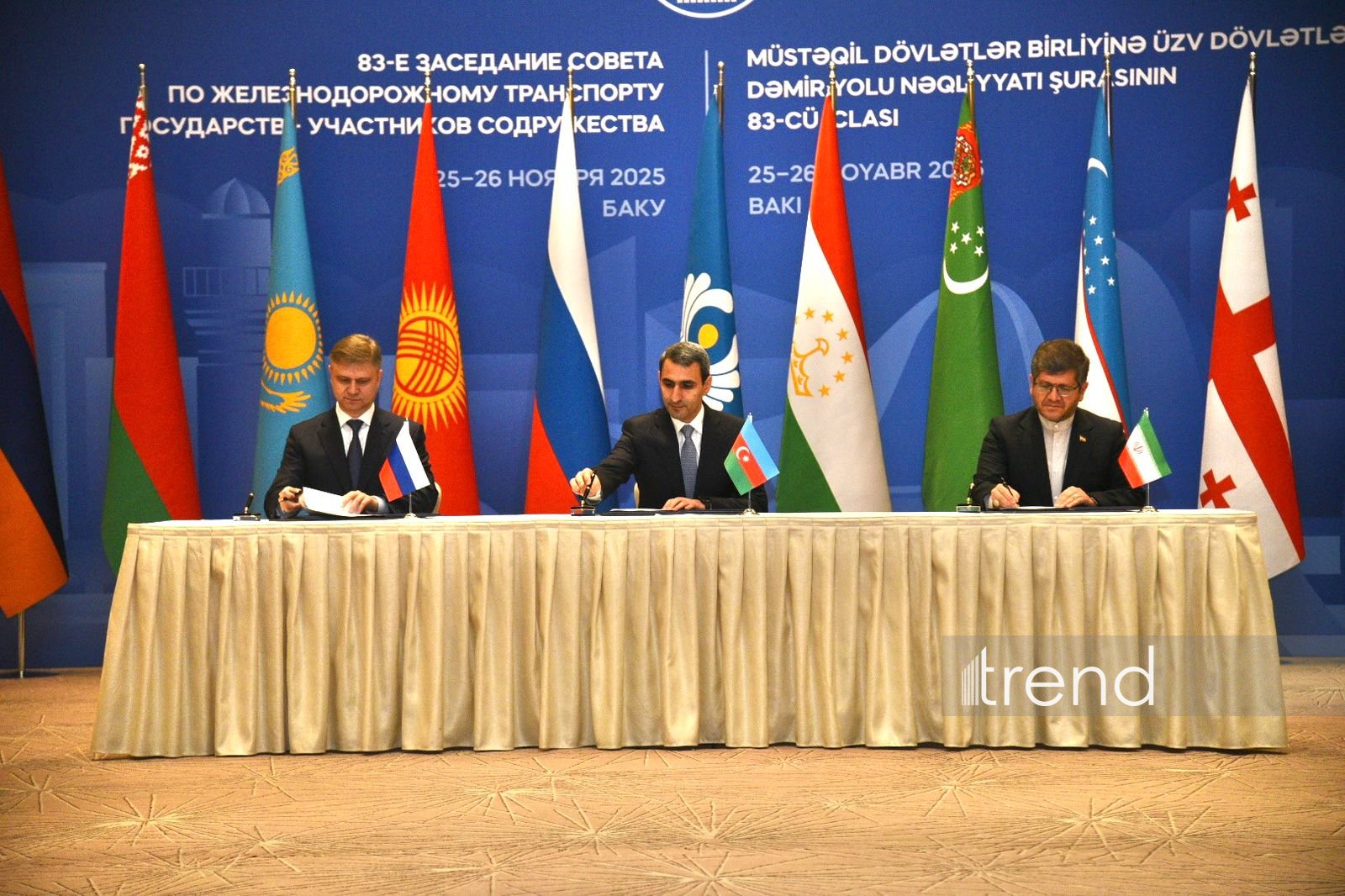BAKU, Azerbaijan, November 28. On November 26, Baku once again became a hub for Eurasian logistics, hosting the 83rd meeting of the CIS Council on Railway Transport. The gathering sent a significant political and economic signal, coming on the heels of a trilateral memorandum signed between Azerbaijan, Russia, and Iran. The document on the development of the western route of the International North-South Transport Corridor confirmed once again that Azerbaijan today is the most reliable and predictable link on this route - a fact well understood by both Moscow and Tehran.
The memorandum signed in Baku provides for the coordination of tariffs, the creation of a single comprehensive tariff, and the launch of regular block trains. In practice, this means establishing a seamless logistics chain without sudden cost jumps or technical delays, which is critically important for shippers. "This approach ensures transparency of conditions and price stability over a defined period, creating a more comfortable and predictable environment for shippers," RZD CEO Oleg Belozyorov told journalists on the sidelines of the event.
The fact that Russia and Iran are signing such agreements specifically with Azerbaijan demonstrates their practical choice. If there were a real alternative to the western route, whether an eastern bypass through Central Asia or purely maritime logistics, neither Moscow nor Tehran would invest in a multi-level tariff and infrastructure system centered on Azerbaijani territory.
Notably, alongside these tariff agreements, Moscow is accelerating construction of the key Iranian section of Rasht-Astara, which had long been considered a bottleneck. In May 2023, Russia signed an intergovernmental agreement to finance the project. Iran, in turn, has sped up land acquisition: 95% of the territory is already formalized. Russian engineers are carrying out works on the acquired sections, with construction planned to begin after 2026.
Both Russia and Iran are investing resources, time, and political capital into developing a route that runs exclusively through Azerbaijan. This is a direct acknowledgment that this path is viewed by them as the primary and long-term option.
Against this backdrop, Azerbaijan is developing its section of the North-South corridor at a much faster pace. Reconstruction of the Sumgayit-Yalama line will be completed by the end of the year. Construction of the Horadiz-Agbend line is in full swing, with plans to extend it to the Armenian border by 2026. Meanwhile, a 188-kilometer section through Nakhchivan is being restored.
These are systemic investments in future cargo flows. Azerbaijan has already set a goal: to increase North-South freight volumes to 5 million tons by 2028 and eventually to 15 million tons.
Tehran recognizes these efforts and describes them as key. "It is encouraging that Azerbaijan is also taking steps to develop its domestic railway infrastructure. This, in itself, will help increase freight volumes," Iranian Deputy Minister of Roads Jabbar Ali Zakeri told Trend in an exclusive interview.
The reliability of Azerbaijani transit is confirmed not only by plans but also by facts. Only with Baku’s consent to open transit to Yerevan were the first shipments of Kazakh and Russian wheat to Armenia successfully carried out. The route through Russia, Azerbaijan, and Georgia has been tested successfully and can now become regular.
The Astara terminal, leased to Azerbaijan for 25 years, is becoming one of the main freight hubs. In 2023, it handled 692,000 tons, and in 2024 around 800,000 tons; once construction is complete, its capacity will rise to 3.5-4 million tons annually. This is a strategic asset not only for the western route but also for the corridor’s maritime branch.
When the region needs real logistics, the choice always falls on Azerbaijani transit. The trilateral memorandum signed in Baku is a political signal, an economic calculation, and a logistical reality in which Azerbaijan plays a central role.
Russia sees Azerbaijani territory as the only truly predictable route to Iran and beyond - to the ports of the Persian Gulf. International organizations working on optimizing the corridor highlight Azerbaijan’s section as the most prepared for digitalization and modernization.
All of this leads to a simple conclusion: Azerbaijan is the most reliable and sustainable partner for transit between Northern and Southern Eurasia. And the countries participating in the North-South project not only recognize this - they build their strategies around it.







